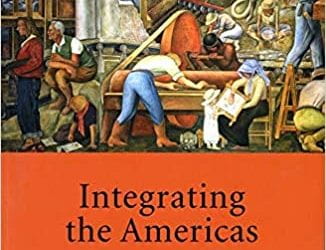A Victory Over Patents
How Brazil has faced the HIV/AIDS challenge

At a Brazilian health center, patients can receive free antiretrovirals. Photo by Luciana de Francesco.
Brazil has become the first developing country to provide free and universal treatment to HIV-infected people and a relative stabilization of the disease incidence has been observed since 1997, one year after the Brazilian Ministry of Health has guaranteed free access to antiretroviral drugs for people living with HIV / AIDS.
The measure faced a heated dispute with the United States over patents, which Brazil won. Since then, the country “has been internationally regarded as capable of putting in place a sound health policy, and confronting pharmaceutical companies if needed,” says Sérgio Queiroz, a University of Campinas professor in his study published by the London-based Panos Institute. With this, the country achieved a significant reduction in deaths and hospital admissions. The World Health Organization (WHO) has recognized it as role model. “Brazil has the most advanced program among developing countries,” recognizes WHO director Jong-Wook Lee.
Now in its third decade, AIDS may become one of the deadliest epidemics in the human history, with more than 20 million deaths related to the disease. According to the latest United Nations report, 39.4 million people are now living with the virus, and are likely to die a decade or more prematurely. Millions of people are infected with HIV every single year, 95 per cent in the developing world.
Compared to Africa and nearby Caribbean islands, Latin America has not faced a full scale AIDS epidemic. With 0.6 per cent of adults aged 15-49 with HIV/ AIDS, Latin America is below the world’s average infection rate. But thanks to its huge population, the region ranks in third in number of people with the disease: 1.7 million live with HIV/AIDS in the continent, according to the latest United Nations estimates.
In Brazil alone, 600,000 live with the infection. The fact that this figure is less than half of projections made one decade ago is an evidence of the Brazilian government policy success. “It has been recognized internationally as a role model,” says Beatriz Tess, a 42 year-old epidemiologist who headed the Ministry of Health’s department of Science and Technology between 1999 and 2003, when the project was implemented. The Brazilian program contrasts with other Latin American countries where response to the threat, according to a World Bank report, “has been slow, small-scale, and largely only supported by international agencies and international programs.”
At the 2002 Pan American Health Organization (PAHO) meeting in Washington, the Brazilian delegation received personal congratulations from many, but not from the United States. U.S. Secretary of Health and Human Services Tommy Thompson reportedly was irritated because Brazil supported the candidacy of Dr. Mirta Periago Roses as the new director of the Pan American Health Organization, while the United States favored the Mexican candidate, Dr. Jaime Sepúlveda Amor. At a reception, Thompson made a welcome speech where, maybe joking, when he said: “We thank you all for coming, you are very welcome, but we are going to be god damn mad at you if you don’t vote our candidate…” According to people present, many took Secretary Thompson speech as a demonstration of Bush-style diplomacy, and decided to vote the candidate launched by Brazil: Argentina’s Periago won.
Although Brazil’s program owes much to the mobilization of society, free and widespread distribution of antiretrovirals through the public-health system is its major feature.
In 1996, then-President Fernando Henrique Cardoso signed a law establishing free distribution of drugs to people living with HIV/AIDS. Although the measure faced political, financial and logistic challenges, the number of people receiving treatment increased steadily: only 35,000 were enrolled in the program in 1997, while currently 154,000 people are being treated. But the costs also increased: the Ministry of Health last year spent R$ 550 million (US $200 million) just to buy the drugs.
Brazil soon faced challenges to its bold approach to treat the disease. Some in the international community urged that developing countries should focus on prevention because treatment would be too costly. The Brazilian policy, however, proved to be quite cost-effective. The free distribution of a ‘cocktail’ containing about 15 different drugs for those enrolled in the program caused a 50 per cent decrease of the AIDS mortality rate, and more than 80 per cent decrease in hospitalizations. From 1996 to 2001, an estimated 358,000 hospitalizations were prevented, representing savings of approximately US $1.1 billion. Preventive measures such as condom free distribution and nationwide campaigns has stabilized the rate around 18 per 100,000 habitants, with the more urban southern region reaching 27/100,000.
The success of the Brazilian anti-HIV drugs free distribution was based in a twofold strategy: increased local production of generic antiretrovirals and the negotiation of discounts of patented drugs produced by international laboratories. Since the high cost of purchasing antiretrovirals could threaten the program, Brazil favored domestic drug production, although the lion’s share still had to be purchased on the international market. Therefore, Brazilian authorities tried to negotiate a better deal.
In 2001, blaming high costs, José Serra, then Brazil’s Health Minister (currently São Paulo mayor) threatened to break patents of certain antiretrovirals if companies do not reduce prices. “Such a measure, called compulsory licensing, would be admissible under Brazilian patent law, given special circumstances,” observes Jane Galvão, a New York-based senior program officer at the International Planned Parenthood Federation, in her The Lancet article, one of the best panoramic studies of the Brazilian HIV/AIDS program. As a matter of fact, many argue that any country is allowed to break patents in case of war or health emergency. What Brazil did was to declare the AIDS pandemics as such a case, when public health was at danger.
Despite the threat, compulsory licensing has not been applied in practice, and was used only as a negotiation tool. In early 2001 Brazil announced it was considering breaking the patents for both American Merck Sharp Dohme and Swiss Roche laboratories’ drugs if manufacturers did not reduce their prices. After harsh negotiations, Merck agreed to reduce the price for its antiretrovirals by a 60 per cent margin. Reductions offered by Roche, however, were considered inadequate and the Ministry announced plans to produce an equivalent at Far-Manguinhos institution, a government-run laboratory. The Brazilian government argued that 28 per cent of the annual budget for antiretrovirals was being spent on this drug alone. Eventually, Roche agreed to reduce the price of the drug, and plans for breaking patents were dropped. Recently, however, Brazil again announced plans to begin production of Merck’s Efavirenz, even if its patent is due to expire only in 2012.
Brazil’s move evoked both support and challenges in the international arena. Immediately after announcing the threat, the World Trade Organization (WTO) accepted a request by the United States for a panel questioning the procedure. But Brazil reacted quickly. In April of the same year, the United Nations Human Rights Commission approved a resolution proposed by Brazil establishing access to medical drugs during pandemics as a basic human right. Months later United States withdrew the panel against Brazil.
The strategy of threatening companies with the break of patents would not work if Brazil did not meet certain conditions. An important part of the program is the promotion of local production of drugs, particularly generics. International laboratories would not take the Brazilian threat of patent breaking seriously if the country did not have the know-how to produce them at home. Reinforcement of public laboratories such as Far-Manguinhos, Fundação Para o Remédio Popular (FURP), and others were instrumental in negotiating with international laboratories. The Ministry of Health invested in both production and developing capabilities of these laboratories, particularly in Far-Manguinhos, a division of the Oswaldo Cruz Foundation, an institution with a long tradition of research in the health sector. The Rio de Janeiro-based lab has been enlarging not only its drug production but its research capability. It is currently prepared to develop formulations to be internally produced or transferred to other drug manufacturers throughout partnership agreements.
The logistic and strategic challenges in a country the size of Brazil cannot be overstated. Despite its huge territory and 180 million population, in 1988 the country established the so-called Unified Health System, offering comprehensive health care to the entire population, irrespective of employment status or access to other forms of health insurance. This was an important factor in implementation of a distribution program for HIV/AIDS, as was the country’s ability to train personnel in diagnosis and treatment.
Currently there are more than 400 sites around Brazil where patients can receive free antiretrovirals. These sites, called AIDS Drugs Dispensing Units (ADDU) are located in public hospitals or health centers. To be eligible to receive treatment, a patient must be enrolled at the unit, and a doctor must follow-up the patient.
The Brazilian program still faces many challenges. First, it is far from reaching all affected with the virus. After all, of the 600,000 people estimated to be infected, only 154,000 have been so far enrolled in the Ministry of Health program. The program still has much to improve in its notification collection. The latest UN report, for instance, has called the attention of the authorities to the fact that the disease incidence is likely to increase among Afro-Brazilians, and so registration of data on race and ethnicity is becoming increasingly important. In fact, until recently data by race or ethnicity were all but ignored by official statistics. As soon as statistics become to appear, they confirmed UN worries: in fact, although Blacks account for 6.2 per cent of the Brazilian population (with mixed accounting for other 38.5 per cent) 11.2 per cent of infected men are Black, while Black women accounted for 14.3 per cent of AIDS cases last year.
Another major challenge is that Brazil is still dependent on raw material imported from other developing countries, particularly from India. In early 2005 the Ministry of Health recognized that stocks were so low that it had to import finished antiretrovirals from Argentina.
But the single most important challenge is still funding. The Brazilian project was possible thanks to three loans by the World Bank. The last one, a US $100 million loan made in 2003, was matched with an equal amount from Brazilian Ministry of Health, and is supposed to support the program until 2006. But Brazil has to find a way to make it self-sustainable. And this can be a problem. “When the money comes pegged to the AIDS program, wherever it comes from, you can be sure it will hit the target,” says Dr. Beatriz Tess, currently a researcher at Instituto do Coração, a distinguished public hospital in São Paulo. “But if the money has to come from the Ministry of Health general budget, whether the resources go to the Aids program or not will depend a lot on the judgment of policy makers and competing public health priorities.”
Whatever will be its future, the Brazilian model is a notable showcase on how a developing country can control a deadly epidemic with some help from international agencies and, social mobilization and adequate policies. It remains to be seen if it can be applied to other countries. It is certain, however, that much can be learned from its experience.
Spring/Summer 2005, Volume IV, Number 2
René Daniel Decol, a writer and social scientist based in São Paulo, is the health journalist for A Casa http://www.acasa.com.br.
He can be contacted through his own website http://www.sociometria.com.br/decol
Related Articles
Despite the Odds: The Contentious Politics of Education Reform
In the 1990s, education policy in Latin America cried out for reform. Although literacy rates and access to education in Latin America had risen in previous decades, education reform became…
Landscapes of Devils, Tensions of Place and Memory in the Argentinean Chaco
Gastón R. Gordillo’s portrayal of the Toba aborigines population from the Gran Chaco is a deep and thoughtful insight into the minds of the men and women of that region and the memories…
Integrating the Americas: FTAA and Beyond
oday, two out of five people in Latin America and the Caribbean (LAC) live below the official World Bank poverty line of two dollars per day. Over the last two decades, the number of poor…




